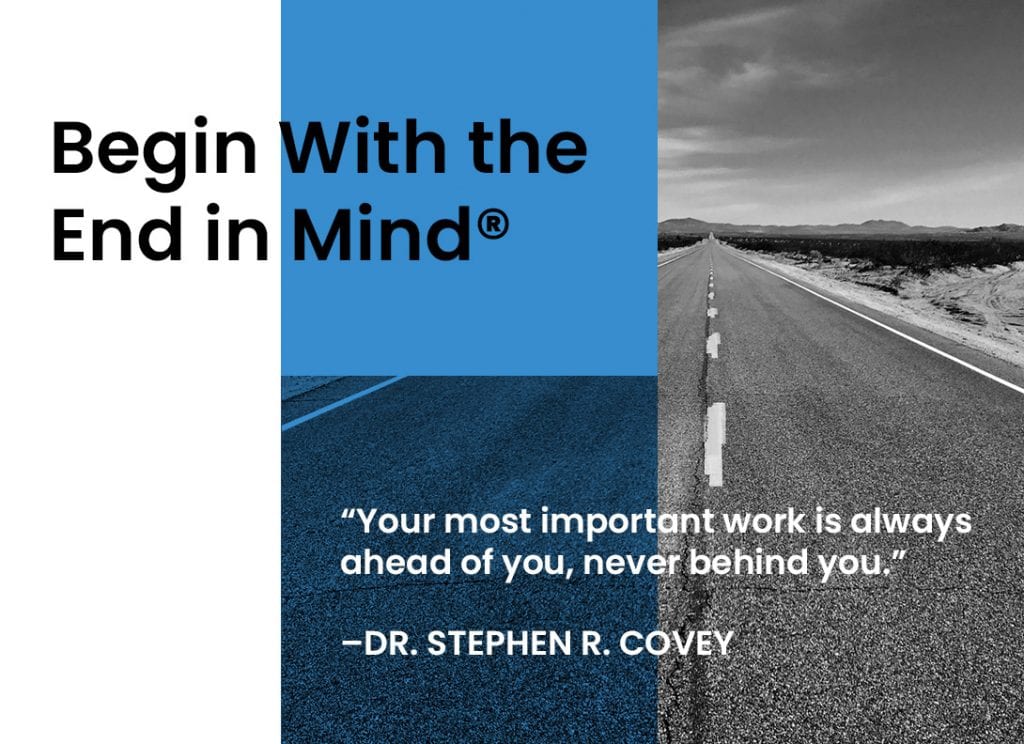30 Dec STEPHEN COVEY’S SEVEN HABITS OF HIGHLY EFFECTIVE PEOPLE – ARTICLE 5
 The next article in this series is from Liz Brown, who likes to “begin with the end in mind”.
The next article in this series is from Liz Brown, who likes to “begin with the end in mind”.
Life is so hectic that it is all too easy in business, and in life in general, to live and work day to day. We do truly live in a “now” generation where we expect information, music, films and items to be available to us all the time. However, I learnt from experience when part of a large company-wide transformation programme, that staying in the now and having no vision just led to confusion and chaos. In a lot of cases, we were acting without any prior thought.
In order to be effective and have a focussed team, understanding the end point is so important. If you set out on a journey in your car (or bike or even walking) you (hopefully!) know where you plan to travel to. And although your route might be determined by roadworks or weather or traffic jams, your final destination will be the same. Projects and programmes, no matter how big, are the same. Without that clarity of the end point, you can end up wandering aimlessly all over the place, expending effort and time with no real output. When you stop and look, you find that you haven’t travelled anywhere at all.
So, what is an end point for a project? If it is a standard delivery project then the end point is normally fairly clear, but for change projects this can be much harder to pin down. Essentially, you are trying to clarify your “vision” of the end state and this can sometimes be tough. It might take a number of iterations and may require support from experienced consultants, but the work pays huge dividends in terms of focussing the team and their energy towards one intention. The end point allows all other aspects of the journey to be planned, even if at a high level, and gives everyone a common goal. In Covey’s words “a goal without a plan is just a wish”.
So, if your transformation/change project team is struggling or you don’t seem to be making headway, then stop and ask if you know where you’re going. If not, spend some real time working out where your end is and what you want to achieve when you have got there.



